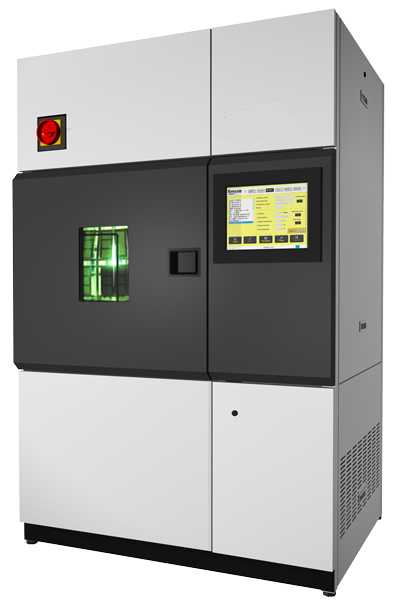Site: Home > Home > News and events
Xenon arc lamp test chambers are widely used in various industries to simulate the effects of natural sunlight on materials and products. These chambers can expose samples to different levels of irradiance, temperature, humidity, and weathering cycles, depending on the standards and specifications required.
But what do industry insiders say about these chambers? How do they choose the best one for their testing needs? And what are the benefits and challenges of using xenon arc lamp test chambers?

In this blog post, we will answer these questions and more, based on the insights and experiences of some of the leading experts in the field of accelerated weathering testing.
What are xenon arc lamp test chamber?
Xenon arc lamp test chambers are devices that use a xenon arc lamp as a light source to simulate natural sunlight. The xenon arc lamp emits a broad spectrum of radiation that covers the ultraviolet (UV), visible, and infrared (IR) regions. The intensity and distribution of the radiation can be adjusted by filters, lenses, and reflectors to match different solar spectra, such as ASTM G173 or ISO 4892-2.
Xenon arc lamp test chambers also have environmental controls that can vary the temperature, humidity, and air flow inside the chamber. Some chambers can also simulate rain, dew, frost, and other weathering factors. These controls allow the user to create realistic and reproducible testing conditions that mimic the outdoor exposure of materials and products.
Why use xenon arc lamp test chambers?
Xenon arc lamp test chambers are widely used in various industries to evaluate the durability and performance of materials and products under natural sunlight. Some of the common applications include:
- Automotive: Testing the colorfastness, gloss retention, cracking, peeling, and corrosion resistance of paints, coatings, plastics, rubber, textiles, and other interior and exterior components.
- Building: Testing the weatherability, thermal stability, fading, chalking, and degradation of roofing materials, siding, windows, doors, sealants, adhesives, and other construction materials.
- Photovoltaic: Testing the efficiency, power output, reliability, and lifespan of solar panels and modules under different climatic conditions.
- Textile: Testing the color fading, strength loss, shrinkage, abrasion resistance, and flammability of fabrics, garments, carpets, upholstery, and other textile products.
- Packaging: Testing the light stability, mechanical properties, barrier properties, and shelf life of food and beverage packaging materials.
- Cosmetics: Testing the photostability, efficacy, safety, and quality of sunscreen products, skin care products, hair care products.
Copyright 2022:Qinsun Instruments Co., Limited
High-end textile tester supplier Email:info@qinsun-lab.com | Textile Testing Equipment pdf | Tel:021-67800179 |